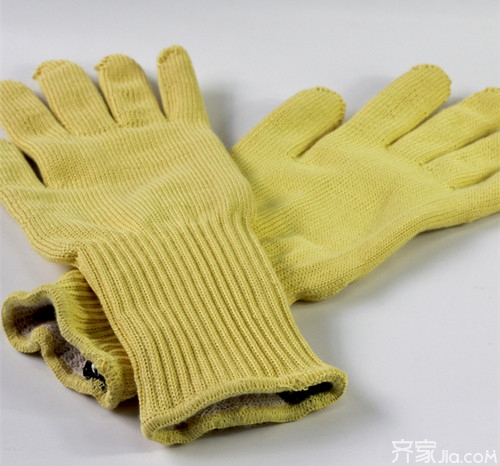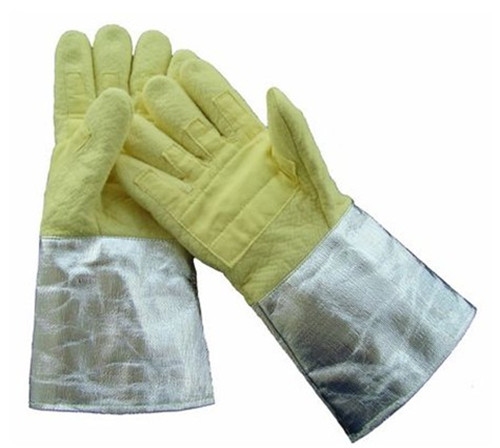
Privacy statement: Your privacy is very important to Us. Our company promises not to disclose your personal information to any external company with out your explicit permission.
High-temperature gloves are special high-temperature gloves used under high temperature environment. They can withstand working gloves with a certain temperature and do not burn and can effectively insulate. Moreover, the application of high-temperature gloves has become more and more extensive, and has become an indispensable labor protection product under high-temperature working environment. High-temperature resistant gloves are also widely used in petrochemical, cement, ceramics, power plants, aluminum, welding and other high-temperature working environment. . Next small series for everyone to introduce the high temperature gloves and Heat-resistant Gloves and the use of precautions.

High temperature gloves material
1, ceramic fiber: ceramic fiber, also known as aluminum silicate fiber, because one of the main components is alumina, and alumina is the main component of porcelain, so it is called ceramic fiber. The addition of zirconia or chromium oxide can further increase the use temperature of ceramic fibers. Ceramic fiber is a kind of fibrous lightweight refractories, with the advantages of light weight, high temperature resistance, good thermal stability, low thermal conductivity, low specific heat, and mechanical vibration resistance. Therefore, it is used in machinery, metallurgy, chemical industry, petroleum, ceramics, etc. Glass, electronics and other industries have been widely used. Ceramic fiber products are an excellent refractory material. It has the advantages of light weight, high temperature resistance, small heat capacity, good insulation and thermal insulation properties, good thermal insulation properties, and no toxicity.
2. Asbestos fiber: Asbestos, also known as "shimian", refers to silicate mineral products with high tensile strength, high flexibility, chemical resistance and thermal erosion, electrical insulation, and spinnability. It is a general term for natural fibrous silicate minerals. There are 2 types of minerals under the jurisdiction of 2 types (serpentine asbestos, amphibole asbestos, asbestos asbestos, amosite asbestos, amosite, tremolite asbestos, etc.). Asbestos is composed of fiber bundles, which in turn are composed of long, fine fibers that can be separated from each other. Asbestos has high fire resistance, electrical insulation and thermal insulation and is an important fire protection, insulation and insulation material. However, asbestos fibers can cause asbestos lung, pleural mesothelioma and other diseases, many countries have chosen a total ban on the use of such dangerous substances.
3, glass fiber: glass fiber (English was originally called: glass fiber or fiberglass) The main components of silica, alumina, calcium oxide, boron oxide, magnesium oxide, sodium oxide, according to the amount of alkali in the glass, can be Divided into non-alkali glass fiber (sodium oxide 0% ~ 2%, aluminoborosilicate glass), alkali glass fiber (sodium oxide 8% ~ 12%, is boron-containing or boron-free soda lime silicate Glass) and high-alkali glass fiber (over 13% sodium oxide, a soda-lime-silica glass). Glass fiber is a kind of inorganic non-metallic material with excellent performance. It has many advantages, such as good insulation, high heat resistance, good corrosion resistance and high mechanical strength, but its disadvantages are brittleness and poor wear resistance. It is made of glass balls or waste glass made of high-temperature melting, drawing, winding, weaving and other processes. The diameter of its monofilament is several micrometers to 20 micrometers, which is equivalent to a hair. For 1/20-1/5, each fiber bundle consists of hundreds or even thousands of monofilaments. Glass fiber is higher in temperature resistance than organic fiber, non-flammable, anti-corrosion, heat insulation, sound insulation, high tensile strength, and good electrical insulation. The chemical properties of glass fiber: melting point 680 °C boiling point 1000 °C density 2.4 ~ 2.7g/cm3.
4. Aramid fiber: Aramid fiber is called “poly(p-phenylene terephthalamide)”, English is Aramid fiber (DuPont's trade name is Kevlar), and it is a new type of high-tech synthetic fiber with ultra-high strength. , high modulus and high temperature resistance,
5, acid and alkali resistance, light weight and other excellent performance, its strength is 5 to 6 times the wire, the modulus of wire or glass fiber 2 to 3 times, toughness is 2 times the wire, and the weight is only 1/ 5 or so, at a temperature of 560 degrees, no decomposition, no melting. It has good insulation and anti-aging properties and has a long life cycle. The discovery of Kevlar is considered to be a very important historical process in the material world.

The use of high temperature gloves precautions
1. When using high-temperature gloves, contact high-temperature objects for a moment, and feel through the hand whether the heat-resistant gloves insulation layer can effectively insulate; after repeated tests, observe whether the surface layer has burned or damaged phenomenon.
2. The heat insulation performance of the inner heat insulation layer may be reduced after the heat-resistant gloves are used for a long time. In order to ensure safety, the time for exposure to high temperatures should be adjusted.
3, heat-resistant gloves should be placed in a clean, ventilated environment after use, to prevent the impact of moisture gloves gloves life, Kevlar heat-resistant gloves should avoid exposure to sunlight, otherwise the glove color will change, but does not affect the use.
4, for the dirty heat-resistant gloves should see the instructions for use, whether it can be cleaned, such as non-cleanable should be replaced with new high-temperature gloves. Damaged heat-resistant gloves should be immediately stopped, otherwise it will cause injury to the operator; dust-free high-temperature gloves will reduce the dust-free effect after damage, and should be replaced immediately.
Editor's summary: About the use of high-temperature gloves and heat-resistant gloves, attention to the use of the introduction here, and hope to help everyone. If you want to know more related information, you can pay attention to this website information.
House Renovation Precautions Home Renovation Precautions Renovation Precautions House Renovation Precautions Handing Precautions
Author:
Ms. Lizzy
Phone/WhatsApp:
+8617366490758
Overview The molded gloves are put on a hand mold, immersed in a plastic slurry made of a variety of chemical raw materials, and then placed in an oven dried PVC plastic gloves. It has many functions...
On a cold winter day, the north wind whistled. With cold hands, I suddenly recalled my mother's knitting gloves. When I was a child, I was afraid to go to school in the county town. The most...
Ding clear rubber gloves and gloves are food, electronics, machinery and other plant commonly used gloves, because the higher the frequency of replacement, a lot of people at the time of purchase do...
Gloves are generally divided into single materials and composite materials (use two or more) 1 It is common for us to use medical gloves. This glove can also be used as a rain-washing glove for...
Email to this supplier
Author:
Ms. Lizzy
Phone/WhatsApp:
+8617366490758
August 30, 2022
August 30, 2022

Privacy statement: Your privacy is very important to Us. Our company promises not to disclose your personal information to any external company with out your explicit permission.

Fill in more information so that we can get in touch with you faster
Privacy statement: Your privacy is very important to Us. Our company promises not to disclose your personal information to any external company with out your explicit permission.